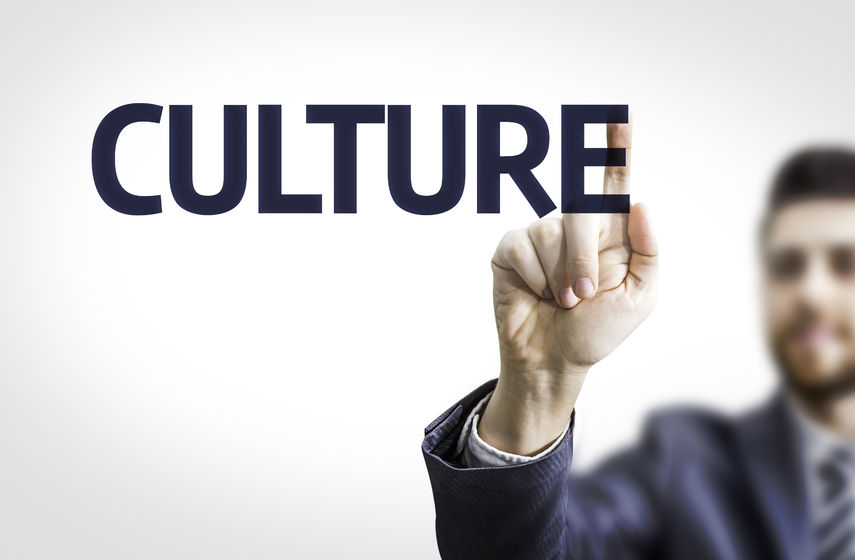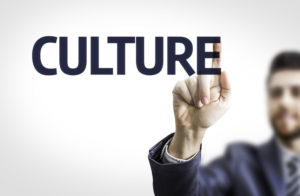The Leader’s Guide To Culture Change

 People overcomplicate culture change. It’s simple.
People overcomplicate culture change. It’s simple.
In fact, nearly all organizational cultures are built and sustained by accident. Most are changed by accident too.
In fact, cultures are pretty dynamic. They constantly evolve and change.
However, they are very rarely designed. They are almost never led.
To design and lead culture change is not complicated. It just takes a few of the right people changing a few of the right things.
The challenge is: Most of the right people don’t want to change.
They usually want to continue doing the same things but (this time) get different results. That approach to culture change is hard. That is why most designed culture change efforts fail.
Before We Change It, Where Does Culture Come From?
I was once working with an Alaska Native organization. We were discussing organizational culture. One of the leaders made the simple statement, “Our culture is the way we do things.”
I like that definition. Culture could also be described as a composite of the basic values, beliefs and accepted ways of seeing and relating to the world in any given group. Or…”The way we do things.”
It is developed primarily from three different sources:
- Leaders: Cultures tend to reflect the values, beliefs, and ways of seeing and relating to their leadership. The way a leader does things is reflected in the culture.
- Shared Histories: Shared experiences, particularly when intensely emotional or challenging, tend to impact the way a group interprets their values, beliefs, and ways of doing things.
- Shared Stories: The stories that are told and retold, within a group, help communicate and reinforce culture.
Nearly all of the above are done on accident. And the consequences of these accidents aren’t always predictable.
Both of the examples below are common in workplaces:
A friendly and accommodating style of leadership can shape a culture that is known for its warmth and inclusiveness. However, if the leaders are also conflict avoidant, there are challenges. It can create a culture where difficult decisions are put off, strong personalities are either pushed out or can easily dominate, and more conflict emerges because issues tend not to be addressed.
A motivated and results-driven style of leadership can shape a culture that is known for performance and success. However, if the leaders are also controlling or perfectionistic, there are cultural challenges. It can create a culture where people feel run over or devalued. Leadership or control may not be easily shared or delegated – leading to disempowered management and staff.
Taken to an extreme, either can create highly toxic workplaces. But even in generally healthy organizations, there are business consequences if culture is unaddressed. There may be unnecessary friction and drag on the system. There may be difficulty in motivating staff or engaging others in high-level decisions and problem-solving.
Your culture is probably mostly where it needs to be. In most cases that is true.
But you might be experiencing some unintended consequences due to culture. You might want to consider changing those.
That requires changing, “The way we do things.”
Ahhh. That’s where it gets difficult.
But I’ll make it easy.
Six Stages of Easy, Intentional Culture Change
One: Begin With Senior Leadership.
Culture change is easy when the most senior and influential leaders in an organization:
- Agree that change is needed.
- Recognize that they are the primary shapers and definers of cultures.
- Accept and commit to changing themselves first.
This is about value, priority, and demonstration. When leaders deeply value something, make it a priority and demonstrate that commitment – a ripple effect occurs. Every single time.
Stage Two: Identify What Needs To Change.
This stage often gets overcomplicated. All that is needed is for leaders to identify three things:
- The change they want in organizational behaviors.
- The beliefs that support the desired behaviors.
- The changes required in leadership behaviors that will be in alignment with the desired beliefs and will result in the desired organizational behaviors.
The focus needs to be on critical beliefs and behaviors of the leaders. It is leadership beliefs and behaviors that create, permit or sustain organizational beliefs or behaviors. Too often focus is on changing the staff – not on changing the leadership. These efforts are time-consuming, exhausting and nearly always unsustainable.
Stage Three: Trigger Culture Change Through Leadership Change.
“Our culture is the way we do things.” When leaders change the way they do things, it triggers cultural change throughout the organization.
This personal change, for leaders, isn’t always easy. But it is attainable when pursued with accountability, transparency and whatever necessary support. Usually faster and with more positive results than what most people anticipate.
There is an element of time in this as well. The issue is people need to recognize, understand and believe that the change in leadership reflects their new priorities and that this isn’t a stage they are going through.
Also, depending on the history, many leaders have built reputations around certain behaviors. It takes time to reform that reputation.
In my experience, if leaders engage in a sustained, transparent and accountable change process, it usually takes them about six months to disentangle from old patterns and become consistent in new ones. It often takes a total of nine months to one year for the ripple effects to be felt throughout the organization.
Stage Four: Communicate This Change To Others.
Leaders need to communicate the changes that they are engaging in. This should be tied to a “why.”
For example,
“For the last ten years, we’ve created a culture that values processes more than people. As a result, we aren’t as creative or adaptive as we need to be. People don’t always feel valued by us. While processes are still important, we want to value people, our customers, and our employees more. Therefore, as leaders, we’ve made X changes. We are now asking you to make X changes as well.”
If leaders have strong credibility within the organization and are fully committed to following through – you can communicate this change while you are going through it yourself.
If leaders have weakened or damaged credibility, they will likely need to take the time to demonstrate their commitment to change and rebuild their credibility before others are open to it.
Stage Five: Support & adjustment is offered where needed.
Sometimes cultural change is scary. Or there are elements of it that are complicated. I once worked with an international humanitarian relief organization. I joined during a period of rapid growth. This growth forced a shift away from informal decision-making and processes to more formal decision-making and processes.
This could have been experienced as a move towards becoming more bureaucratic and impersonal. However, they did a good job of actually increasing the amount of personal connection that was offered from headquarters in Switzerland. They did a great job of framing the change as a way of ensuring the highest possible service to those we served. They also provided support and tools to make adapting to the more cumbersome aspects of increased paperwork and new protocols.
It is important for leadership to stay alert to the intended or unintended impacts of change. It is crucial that leaders then intervene to support the change or make adjustments to address unintended negative consequences.
Stage Six: Review Behaviors That Are “Baked In” To Your Organization
One of the most difficult aspects of adult behavior change is the literal, physical rewiring of our brains. When we begin to adapt to a new set of behaviors or disciplines our nervous system needs to create new pathways to form new habits. This experience can generate a kind of discomfort that isn’t far different from how it feels to start a new physical fitness routine.
In our organizations, we’ve often built “neural pathways” into our systems for hiring, training, acknowledgment, compensation, promotion, planning, and elsewhere. The “ways that we do things” that have become codified into policy or training manuals may directly reflect and reinforce the old culture.
These will need to change to support the new, desired cultural changes. This can often be accomplished by watching for “dissonance” in the workplace.
For example, I was working with a client that had redefined their culture towards one that was highly-valuing of their employees and culture. They accepted the belief that if they took good care of people – business would take care of itself.
However, their hiring processes were still using an old model that attracted people who didn’t innately share this belief of taking care of people. Until that was identified and changed they kept finding they were hiring people who didn’t reflect the new values they had adopted.
It was the dissonance that was being felt that led us to explore and change hiring practices. This helped create a more natural alignment throughout the organization.
Final Thoughts:
Culture change isn’t something you can delegate to an HR or Organizational Growth department. They can serve and partner with you in this. But culture change belongs to senior leaders. It is also something you can’t delegate out to an external consultant, although that consultant can help your leaders.
Culture change is in the domain of senior leadership. If senior leadership chooses to opt out of any of the above stages, you cannot and should not expect designed culture change to take place.
This is common sense. Leaders need to practice what they preach. People will listen to you preach but will act according to what you practice.
Take good care,
Christian
Would You Like To Successfully Lead Culture Change?
If you would like to discuss how to successfully lead a culture change process within your organization please contact me at christian@vantageconsulting.org.
Article Categories
Popular articles

Download my free 10-page eBook:
How To Accomplish More Without Doing More:
Eight Proven Strategies To Change Your Life
Discover how to save eight hours during your workweek-even if you're too busy to even think about it. The resource every maxed out executive needs.